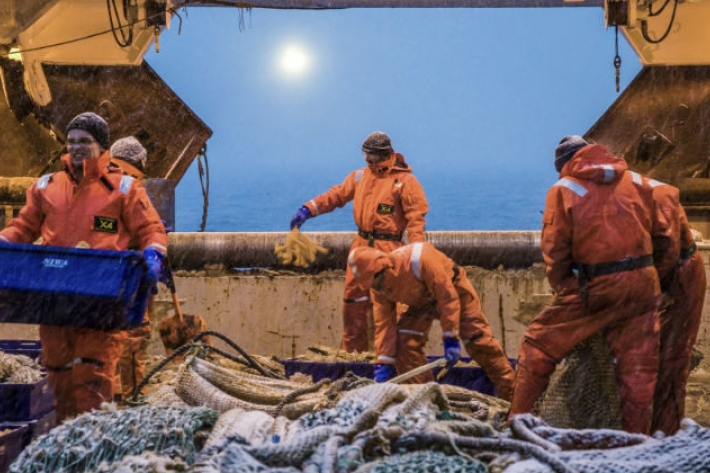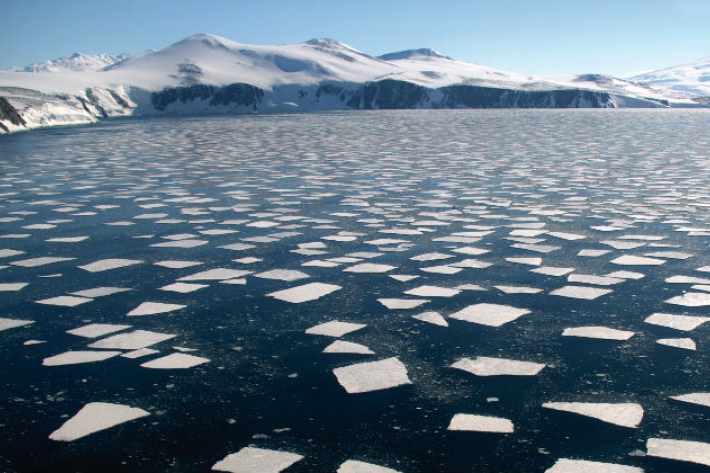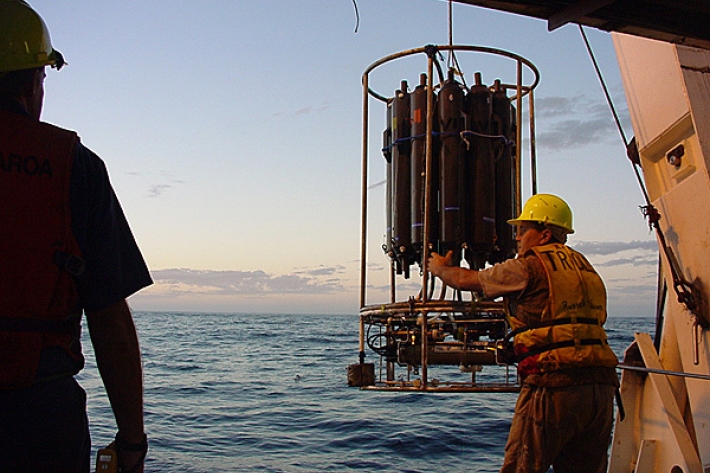The main purpose of the New Zealand-Australia Antarctic Ecosystems Voyage is to study Ross Sea marine foodwebs – particularly those important to top predators in the region.
There are five main objectives:
- Determine factors influencing the abundance and distribution of humpback whales around the Balleny Islands.
- Locate and study blue whale foraging 'hotspots' in the northern Ross Sea.
- Survey demersal (bottom-dwelling) fish species on the Ross Sea slope, particularly grenadiers and icefish, to better understand the ecological effects of commercial toothfish fishing in the region.
- Deploy a moored echosounder in Terra Nova Bay to study Antarctic silverfish spawning during winter.
- Collect oceanographic and atmospheric data from the Southern Ocean to enhance datasets used for validating global ocean and atmosphere models and improve understanding of ocean–atmosphere processes and interactions.
-

Factors influencing abundance and distribution of humpback whales
This voyage will undertake a range of surveys around the islands to understand the factors influencing abundance and distribution of the whales - including what they eat. -

Characterising blue whale foraging habitats in the northern Ross Sea
This study will complement groundbreaking work undertaken in 2013 to determine the distribution of blue whales in the area and measure the characteristics of their habitats. -

Trawl surveying demersal fish species on the Ross Sea slope
Commercial toothfish fishing in the Ross Sea has the potential to affect some demersal (bottom-dwelling) fish species in the region through by-catch and ecosystem changes. -

Studying Antarctic silverfish spawning in Terra Nova Bay
This research will investigate whether Antarctic silverfish eggs are spawned elsewhere or whether there is a mass migration of silverfish to their coastal spawning sites each winter. -

Measuring and analysing the Southern Ocean seas and atmosphere
Data collected continuously from this voyage will fill a critical knowledge gap, helping scientists to produce better global climate and oceanographic models to ultimately improve weather forecasting.

